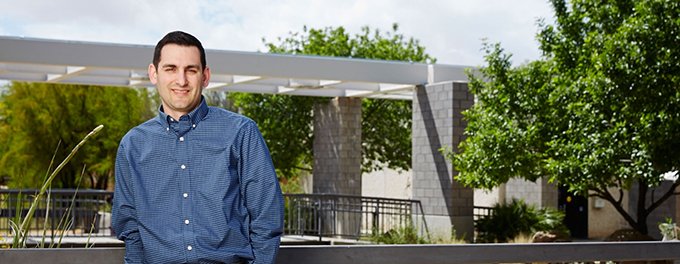Software Asset Management Tools Help Higher Ed IT Ease Audit Angst
When the task of managing the software on about 7,000 devices fell to Pima Community College’s Sean Mendoza, his first priority was to mitigate the campus’s risk in vendor licensing audits.
Under Mendoza’s leadership, the college’s six campuses, near Tucson, Ariz., underwent a three-year effort to develop a software asset management (SAM) process and implement tools such as Snow Software’s License Manager. The work has substantially reduced the college’s risk of incurring noncompliance fines and, so far, has yielded broader benefits such as improved data-based decision-making on software purchases and increased awareness of software resources available to faculty and staff.
“Now we can know whether the licenses we have are really used,” says Mendoza, who was an IT academic technology advanced analyst when he spearheaded the SAM program. “Rather than paying for software that we think we need, we only pay for software we actually need.”
Pima’s new program is part of the IT team’s increasingly proactive approach to software management, says Andrew Schuler, IT systems architect for User Support Services at the college. Pima enrolls about 47,500 students annually, and its SAM tools and processes are now essential to ensuring compliance through automation and reporting. The setup also improves software lifecycle management and user access to applications, while helping to optimize the use of software assets, Schuler says.
“Software is a huge part of our budget,” Schuler says. “In education, IT is always about doing more with less, and SAM helps us do that while reducing real risk.”

Andrew Schuler says Pima Community College takes a proactive stance on software management.
More Audits, Greater Risk
While other benefits follow, minimizing compliance risk in an increasingly complex and aggressive auditing environment is the main driver for the growth in SAM adoption, says Gartner Research Director Hank Marquis. The software industry continues to evolve from a model based on counting licenses to one based on algorithmic consumption, he says. As licensing models become more complicated, software manufacturers become more aggressive with their auditing programs.
“You will be audited,” Marquis says. “Vendors know they’re losing a lot of money from piracy and noncompliance. Without SAM in place, even if you’re in compliance, you won’t have the reports that help an audit go smoothly. You set yourself up for unplanned expenses and a time sink while you’re trying to maintain regular services for your users.”
IT teams should set a SAM process before implementing tools to support the process, Marquis advises. Take time to choose the right technology, especially because most tools only support specific licensing plans. A complete inventory of all institutional software and devices must be a part of the decision, he says.
When Mendoza and the Pima IT team started work on the Pima solution, they aimed to manage software information built on people, processes and data, he says. He then evaluated a dozen SAM solutions before narrowing the field down to two contenders. Both had the discovery, reporting and tracking features the team wanted, but Snow License Manager provided better customer support, Mendoza says. Staffers then began inputting the purchasing information and licensing entitlements for every instance of software on a Pima device by hand, he says.
“It was a Herculean task, but it was an opportunity for dialog between IT and the college community to make informed, data-based decisions to better serve our students,” Mendoza says. “Going forward, the system will report what entitlements have been inventoried and purchased, as well as usage data. That enables us to use our existing software resources to their fullest extent and ensure our compliance to the company’s license agreement.”
Focused on Compliance
Janice Tulloss, software licensing coordinator at the University of North Carolina, Greensboro (UNCG), has been working to bring order to that campus’s complicated software environment since 2008. She says licensing has grown into a much greater issue for higher ed IT in the past few years.
“There is absolutely more emphasis on risk mitigation today because there is greatly increased risk,” she says. “Software has become so expensive, fines for noncompliance have gone up, and auditing is much more prevalent.”
Colleges and universities need to educate users about piracy and its consequences and put tools and processes in place to ensure compliance, Tulloss advises.
UNCG currently uses a license management tool in conjunction with Microsoft System Center Configuration Manager to monitor compliance, deployment, access and software use, Tulloss says. That technology is bolstered by application review and software lifecycle management processes that aim to ensure clients have access to the best software solutions to meet their needs.
“We’re a state institution, and we want to make sure we’re spending people’s money wisely,” Tulloss says. “We want to be as efficient as we can, and software asset management is an important piece of that.”








